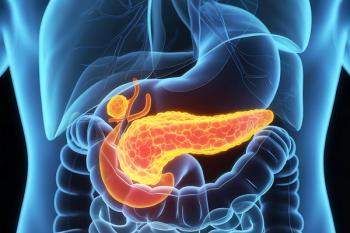
Keeping Pace With PFAS Research
The critical role of separation science in per- and polyfluoroalkyl substances (PFAS) research highlights just how essential chromatography is in solving complex challenges that benefit society.
Chromatography plays a crucial role in the research and analysis of per- and polyfluoroalkyl substances (PFAS), a group of synthetic chemicals that have raised significant environmental and health concerns. Due to their unique chemical structure, PFAS are highly persistent in both the environment and living organisms, leading to their widespread presence in water, soil, and food (1). As these substances are difficult to break down and can accumulate over time, accurate and efficient detection is essential for understanding their impact.
Chromatography, particularly techniques such as liquid chromatography mass spectrometry (LC–MS) and liquid chromatography tandem mass spectrometry (LC–MS/MS), are the frontline investigators of PFAS research to isolate, separate, and identify individual compounds within complex samples (1,2,3). Gas chromatography mass spectrometry (GC–MS) (4,5) and other techniques, such as, combustion ion chromatography mass spectrometry (CIC–MS) (6,7), supercritical fluid chromatography mass spectrometry (SFC–MS) (8) and capillary electrophoresis mass spectrometry (CE–MS) (9) are less commonly used but have been applied to PFAS research.
These techniques allow researchers to detect trace amounts of PFAS with high precision, enabling the study of their behavior, distribution, and potential health effects. Furthermore, chromatography aids in the development of regulatory frameworks and remediation strategies by providing critical data on PFAS levels in various environmental and biological matrices. In short, chromatography serves as a cornerstone of PFAS research, helping to address one of the most pressing environmental challenges of our time.
LCGC International has focused extensively on the latest trends and developments in PFAS research using chromatography in the first quarter of 2025. Our recent PFAS Summit 2025 was a resounding success with the participation of leading researchers and technology experts exploring PFAS in food and environmental matrices using the latest cutting-edge chromatographic technologies. You can
We also organized another successful symposium on PFAS analysis, specifically for water analysis. You can view that event
The editors of LCGC International have also kept up with the pace of PFAS research with extensive interviews with leading practitioners and the latest research news stories. It’s been a pleasure for the LCGC International editorial team to collaborate with all the research groups from academia and leading chromatography companies to keep our readers up to speed with the latest developments in PFAS research from a separation science perspective and highlighting the important role chromatographers play in solving problems facing society.
Below, we’ve highlighted a few standout pieces that readers who are interested in PFAS analysis should check out.
Advances In Non-Targeted Analysis for PFAS in Environmental Analysis
David Megson from Manchester Metropolitan University in Manchester, UK, was interviewed on the latest advances in non-targeted analysis (NTA) of PFAS in environmental matrices based on a recent systematic review paper he collaboratively published:
The Role Of SPME Combined With GC–MS for PFAS Analysis
While GC–mass spectrometry (MS) is less commonly used than LC–MS for PFAS analysis, this interview showcases the advantages of using solid-phase microextraction (SPME) combined with GC–MS in a recent research project conducted by Emanuela Gionfriddo and Madison Williams from the University at Buffalo, the State University of New York, NY, USA:
The Effect of Time and Tide on PFAS Concentrations in Estuaries
Oliver Jones and Navneet Singh from RMIT University in Melbourne, Australia, explored the relationship between tidal cycles on PFAS concentrations in estuaries:
Non-targeted Identification of Precursors, Fluorine Mass Balance, and Microcosm Studies for PFAS in Agricultural Soils
Joel Fabregat-Palau, a postdoctoral researcher at the University of Tübingen in Germany, discussed his latest research investigating agricultural soils for PFAS using a targeted approach with high performance liquid chromatography tandem mass spectrometry (HPLC–MS/MS) and a non-targeted high performance liquid chromatography quadrupole time-of-flight mass spectrometry (HPLC–QTOF-MS) method for semi-quantification:
A Matrix-Matched Semiquantification for PFAS in AFFF-contaminated Soils
Another team from the University of Tübingen, Catharina Capitaine and Melanie Schüßler from the Faculty of Geosciences, discussed their recently published research highlighting the value of matrix-matched semi-quantification for PFAS in aqueous film-forming foam (AFFF)-contaminated soils.
The Current Challenges Mitigating PFAS
Senior Editor Will Wetzel recently conducted a series of interviews with Ralf Mead from the Mead Group at UNC Wilmington and the North Carolina PFAS Testing Network on some of the recent research his team conducted to investigate the PFAS problem.
A Review of The Latest Separation Science Research in PFAS Analysis
Executive Editor, Jerome Workman, released a relevant update on contemporary analytical trends in PFAS research in our “Hot Topics in PFAS” Supplement:
PFAS Researchers Call for Access to PFAS Reference Standards from Manufacturers
A recent news story also coveredconcerns raised by PFAS researchers about potential limitations in PFAS research due to restricted access to high-purity reference standards.
References
1. https://www.chromatographyonline.com/view/a-review-of-the-latest-separation-science-research-in-pfas-analysis
2. Megson, D.; Bruce-Vanderpuije, P.; Idowu, I. G.; Ekpe, O. D.; Sandau, C. D.
A Systematic Review for Non-Targeted Analysis of Per- and Polyfluoroalkyl Substances (PFAS). Sci. Total Environ. 2025, 960, 178240. DOI: https://doi.org/10.1016/j.scitotenv.2024.159234
3. Al Amin, M.; Sobhani, Z.; Liu, Y.; Dharmaraja, R.; Chadalavada, S.; Naidu, R.; Chalker, J. M.; Fang, C. Recent Advances in the Analysis of Per- and Polyfluoroalkyl Substances (PFAS)—A Review. Environ. Technol. Innov. 2020, 19, 100879. DOI: https://doi.org/10.1016/j.eti.2020.100879
4. Wolf, N.; Müller, L.; Enge, S.; Ungethüm, T.; Simat, T. J. Thermal Desorption–Gas Chromatography–Mass Spectrometry (TD-GC–MS) Analysis of PFAS Used in Food Contact Materials. Food Addit. Contam. Part A 2024, 1–19. DOI: 10.1080/19440049.2024.2370371
5. Mok, S.; Lee, S.; Choi, Y.; Jeon, J.; Kim, Y. H.; Moon, H. B. Target and Non-Target Analyses of Neutral Per- and Polyfluoroalkyl Substances from Fluorochemical Industries Using GC–MS/MS and GC-TOF: Insights on Their Environmental Fate. Environ. Int. 2023, 182, 108311. DOI: 10.1016/j.envint.2023.108311
6. Skedung, L.; Savvidou, E.; Schellenberger, S.; Reimann, A.; Cousins, I. T.; Benskin, J. P. Identification and Quantification of Fluorinated Polymers in Consumer Products by Combustion Ion Chromatography and Pyrolysis-Gas Chromatography-Mass Spectrometry. Environ. Sci.: Process Impacts2024, 26 (1), 82–93. DOI: 10.1039/D3EM00438D
7 Idjaton, B. I.; Togola, A.; Ghestem, J. P.; Kastler, L.; Bristeau, S.; Ronteltap, M.; Colombano, S.; Devau, N.; Lions, J.; van Hulle-busch, E. D. Determination of Organic Fluorinated Compounds Content in Complex Samples Through Combustion Ion Chromatography Methods: A Way to Define a “Total Per- and Polyfluoroalkyl Substances (PFAS)” Parameter?. Sci. Total Environ. 2024, 932, 172589. DOI: 10.1016/j.scitotenv.2024.172589
8. Amziane, A.; Monteau, F.; Alamir, B.; Le Bizec, B.; Dervilly, G. Optimization and Validation of a Fast Supercritical Fluid Chromatography Tandem Mass Spectrometry Method for the Quantitative Determination of a Large Set of PFASs in Food Matrices and Human Milk. J. Chromatogr. B2022, 1210, 123455.
DOI: 10.1016/j.jchromb.2022.123455
9. Lees, H.; Jõul, P.; Siilak, K.; Vaher, M. Separation of Perfluoroalkyl Substances by Using Nonaqueous Capillary Electrophoresis with Conductivity Detection. Sep. Sci. Plus 2020, 3 (7), 313–320. DOI: 10.1002/sscp.202000016
Newsletter
Join the global community of analytical scientists who trust LCGC for insights on the latest techniques, trends, and expert solutions in chromatography.





